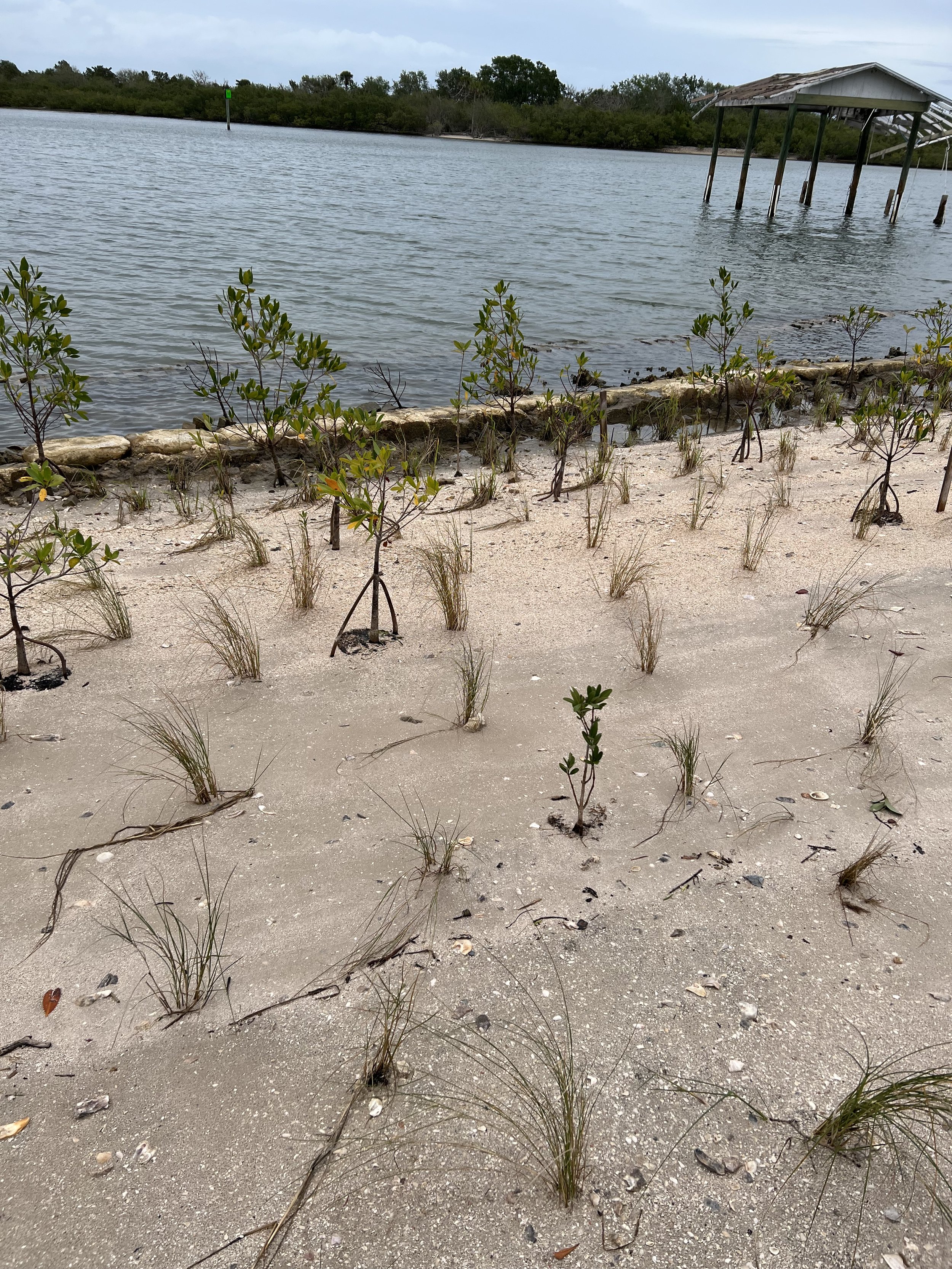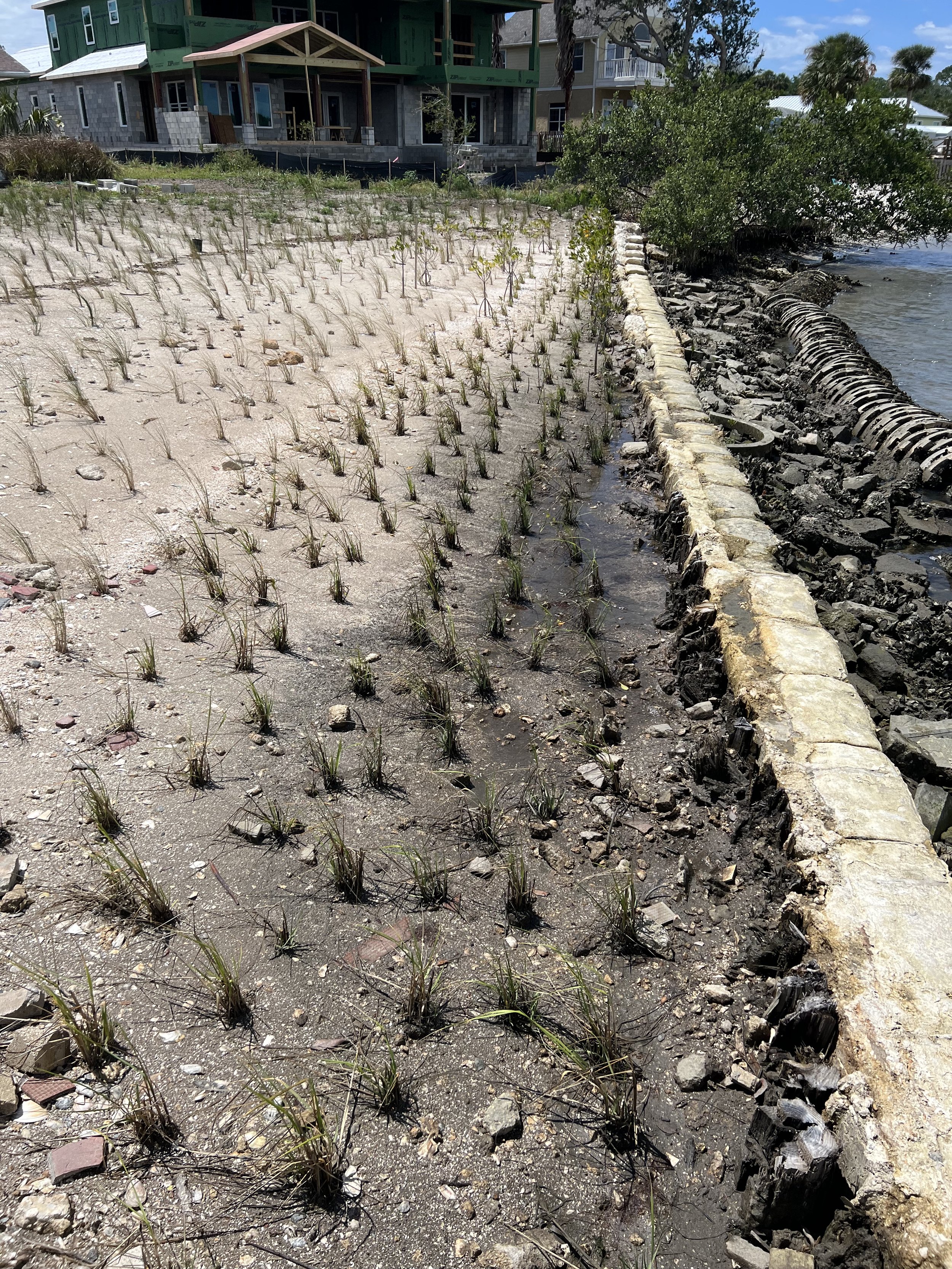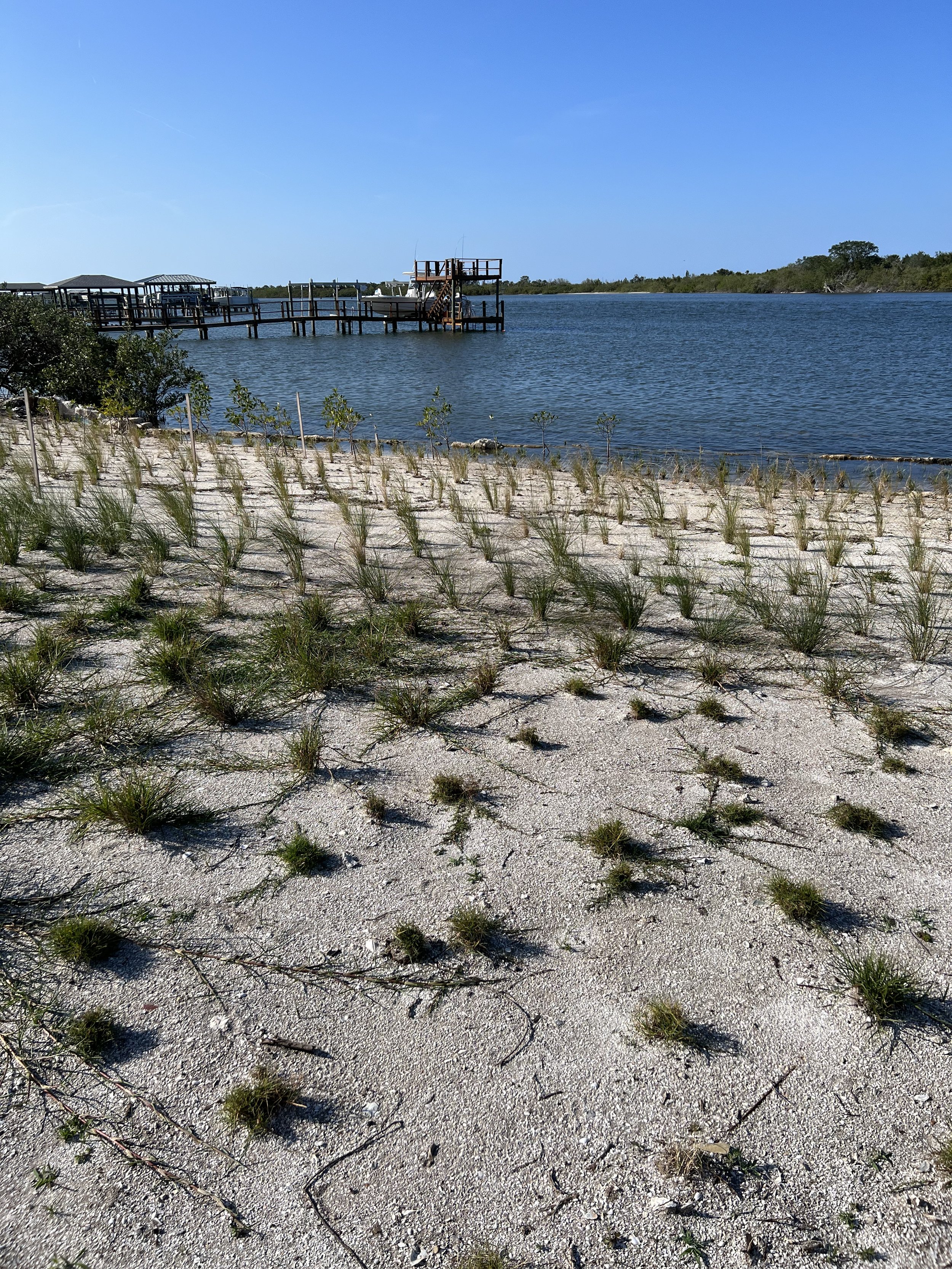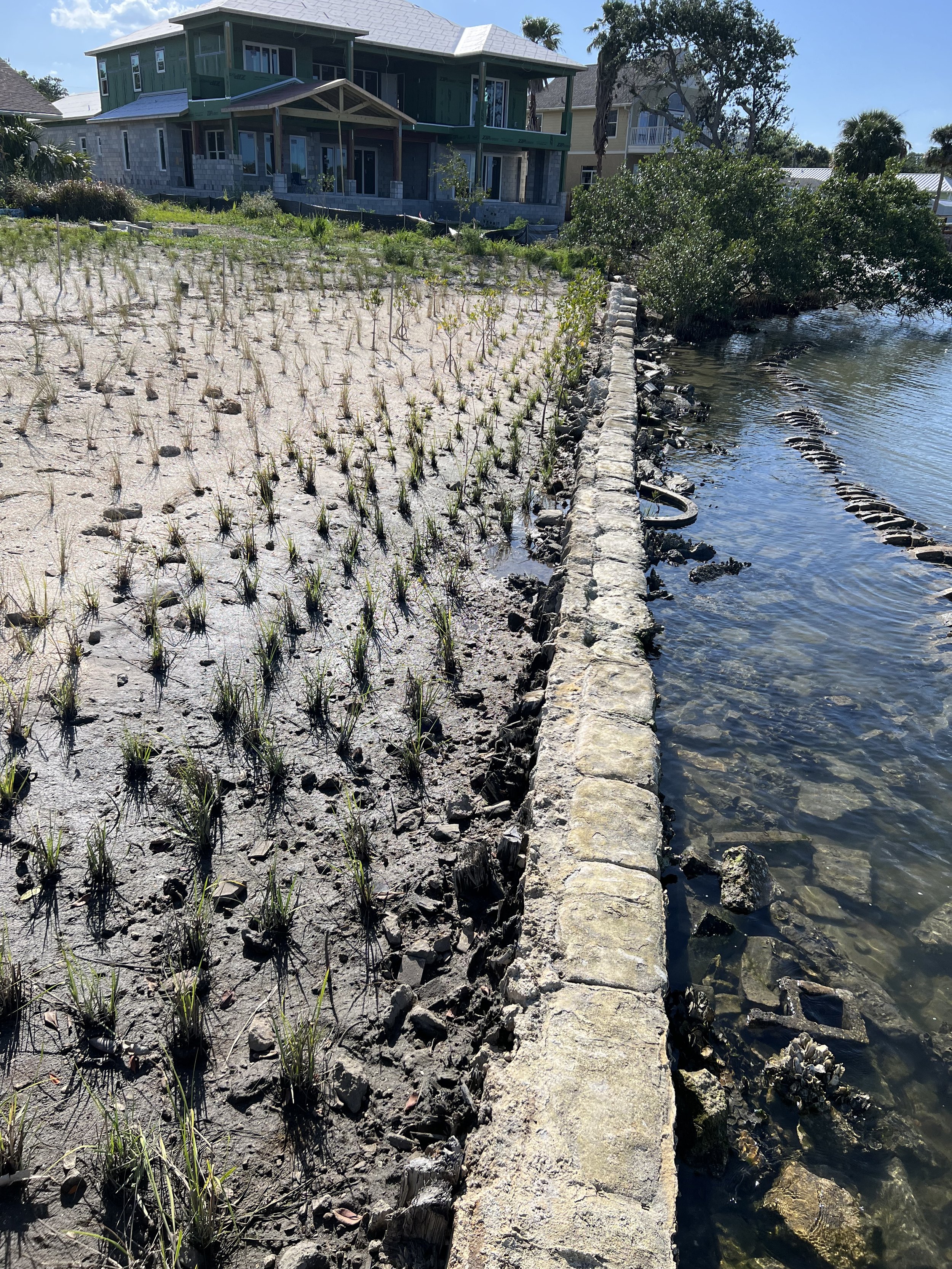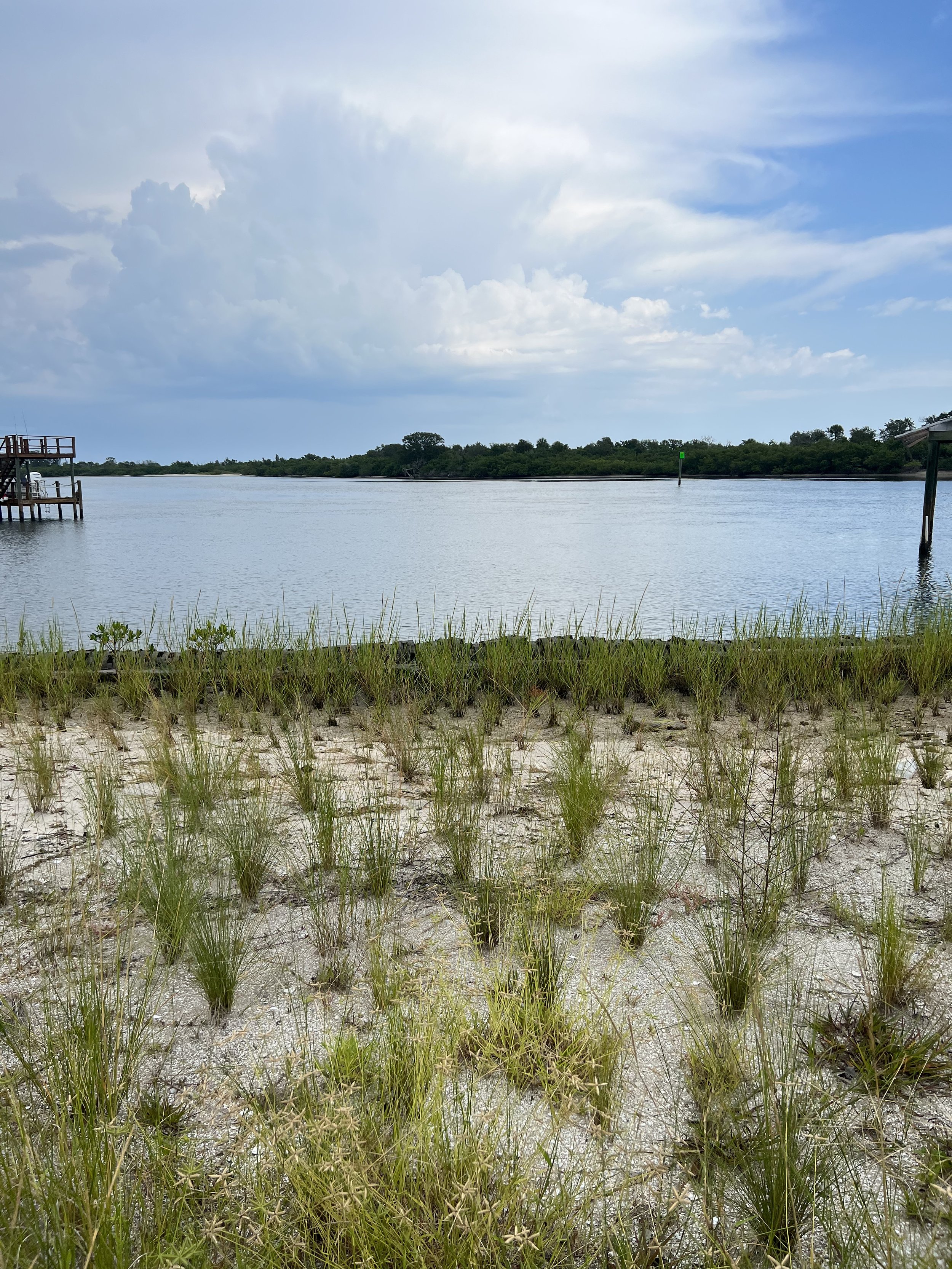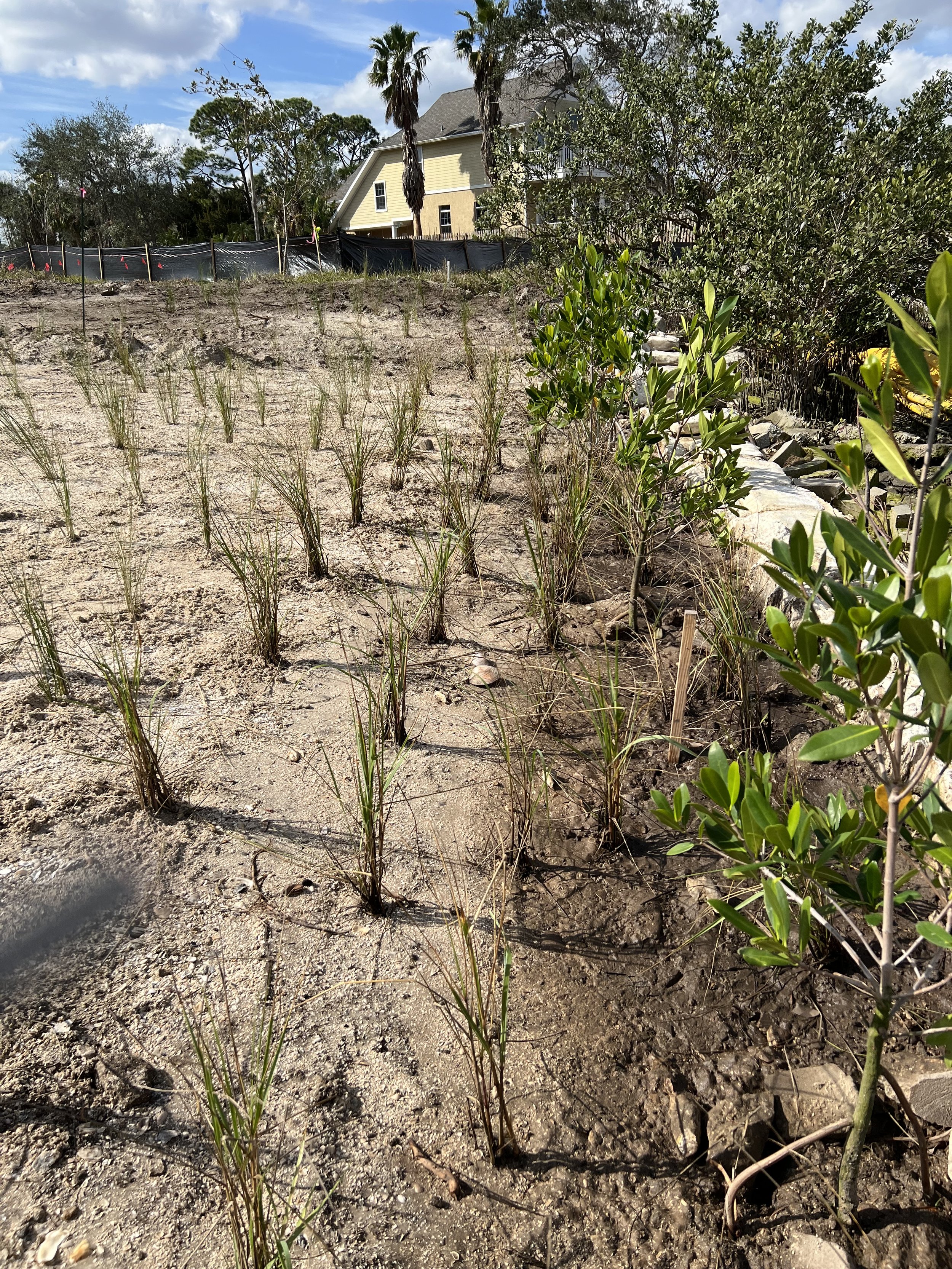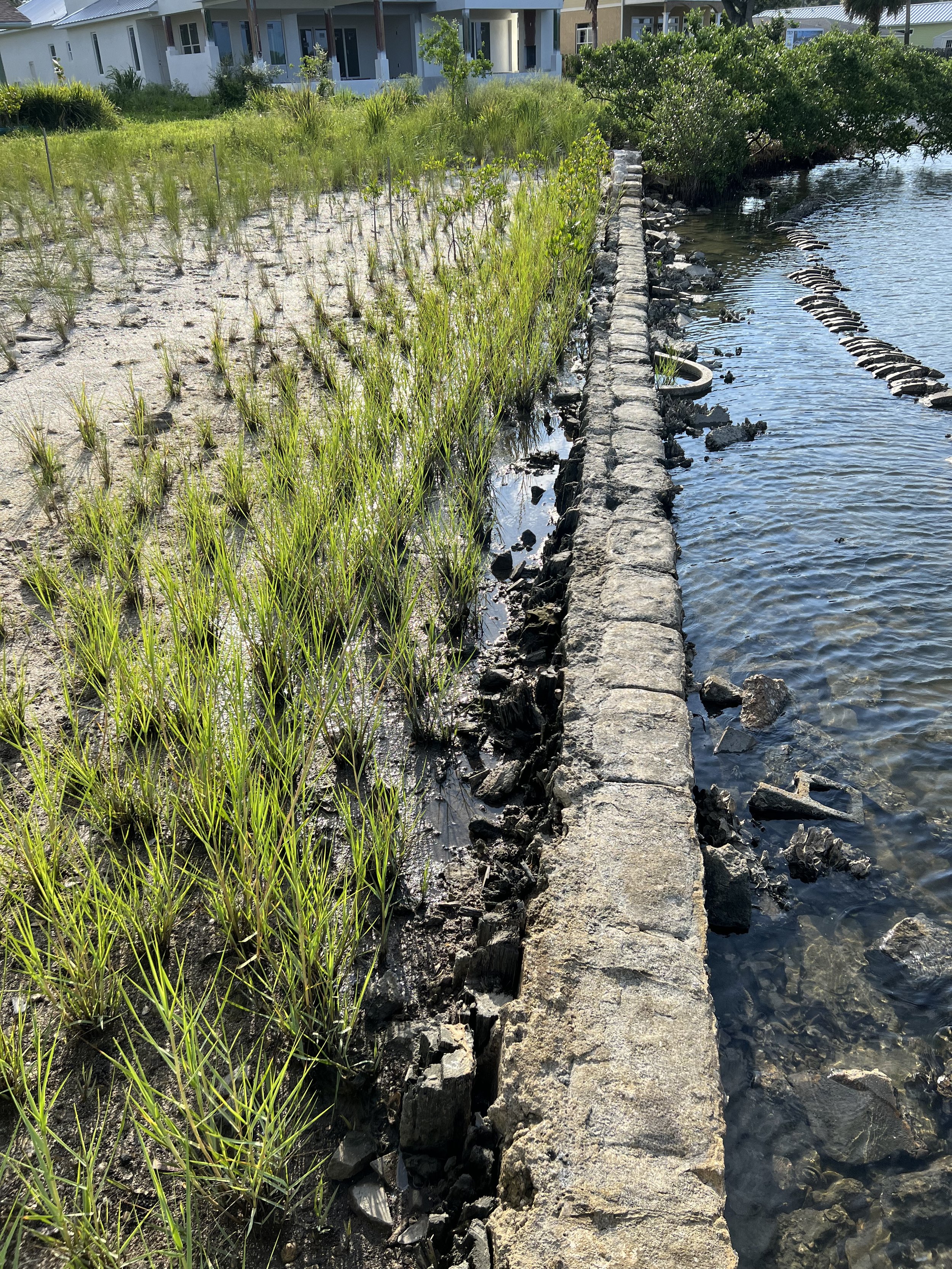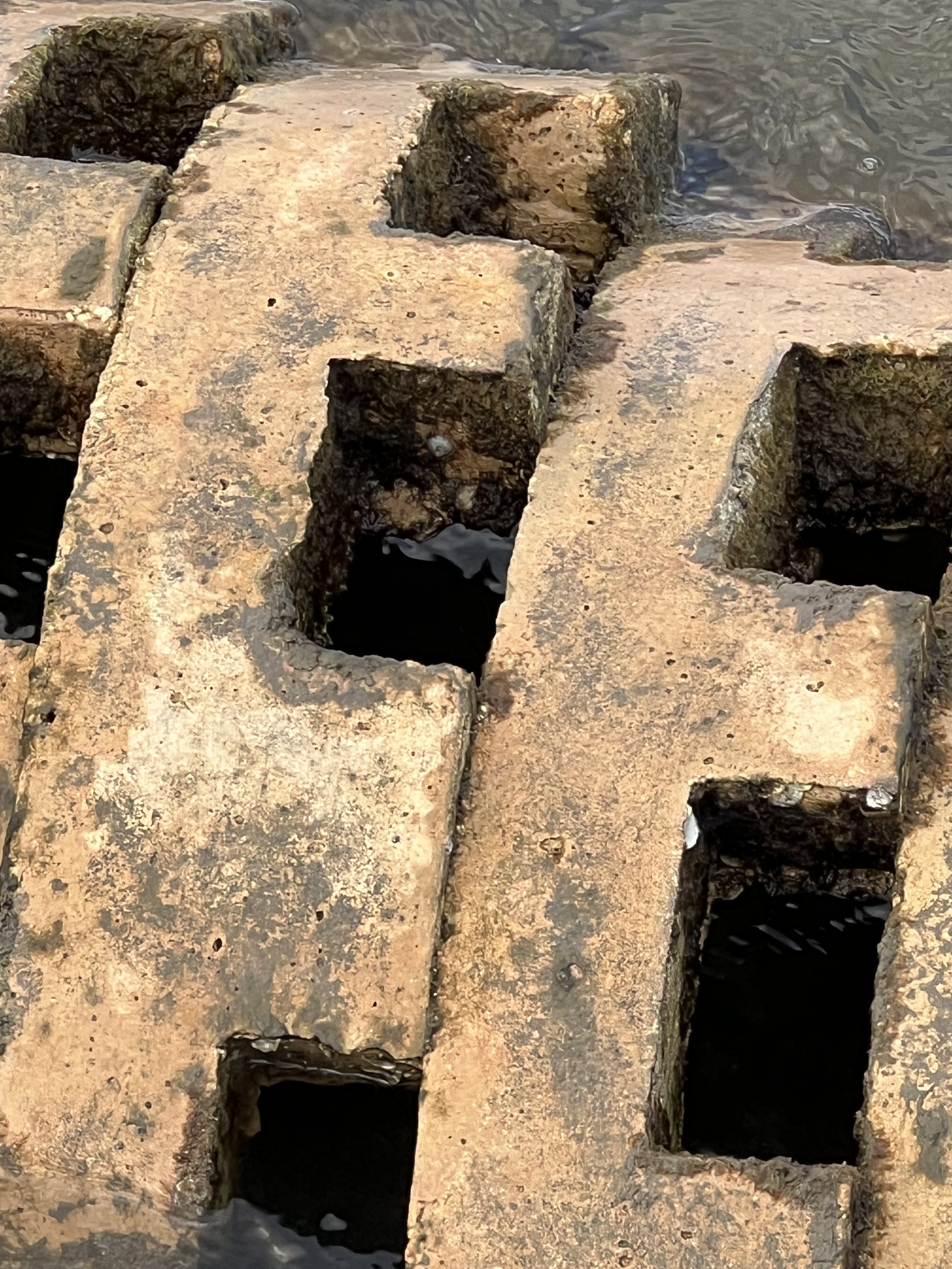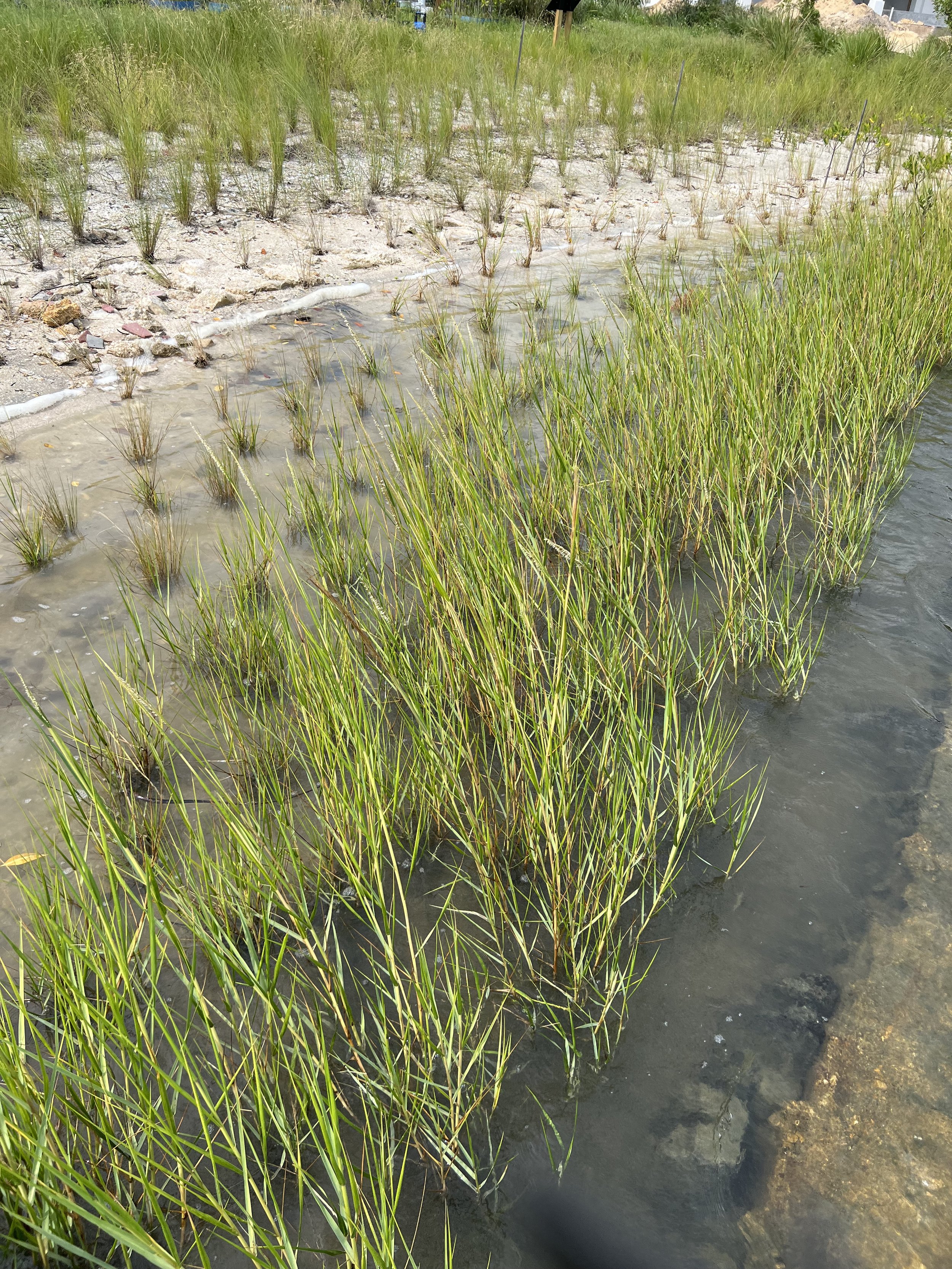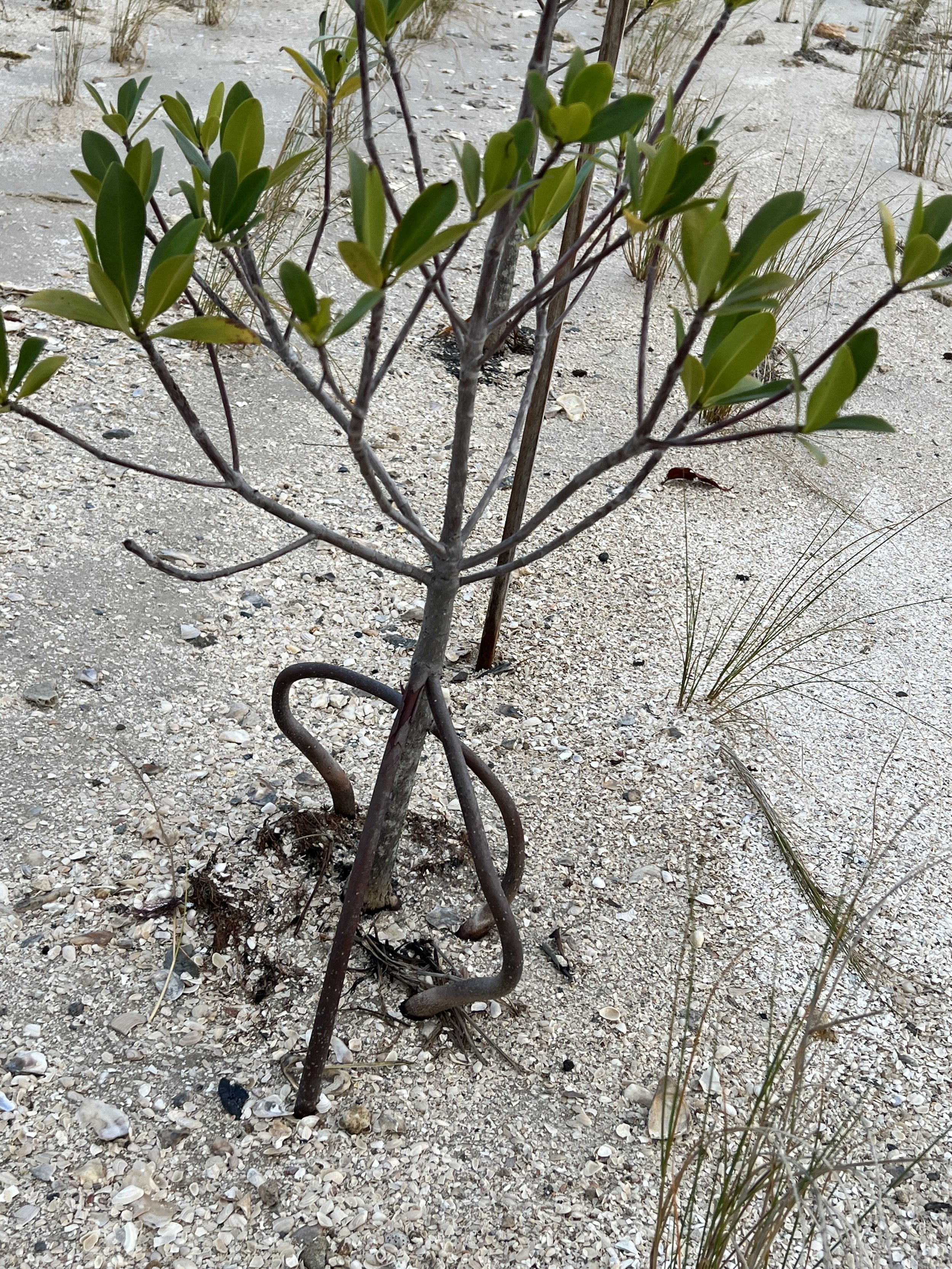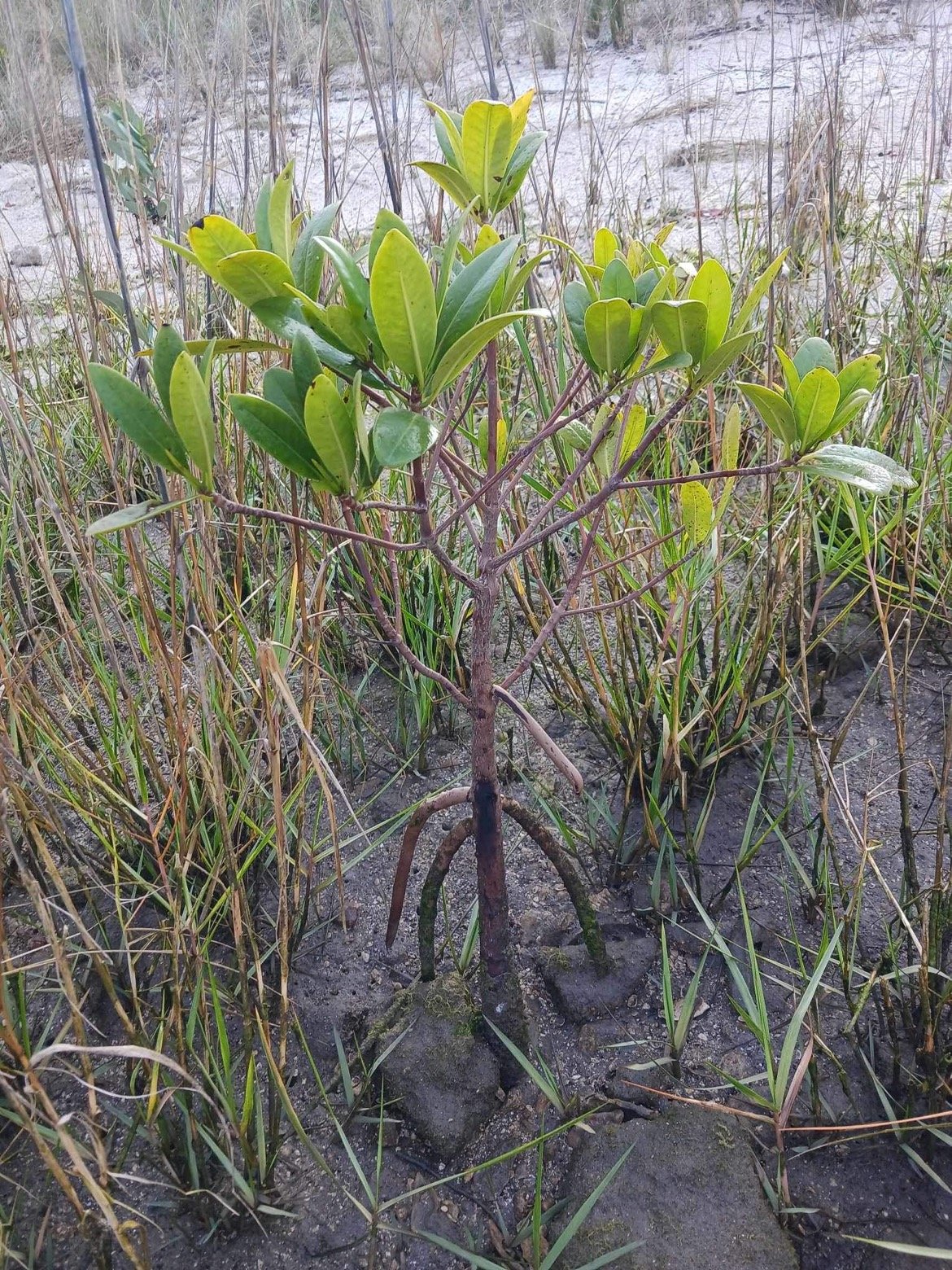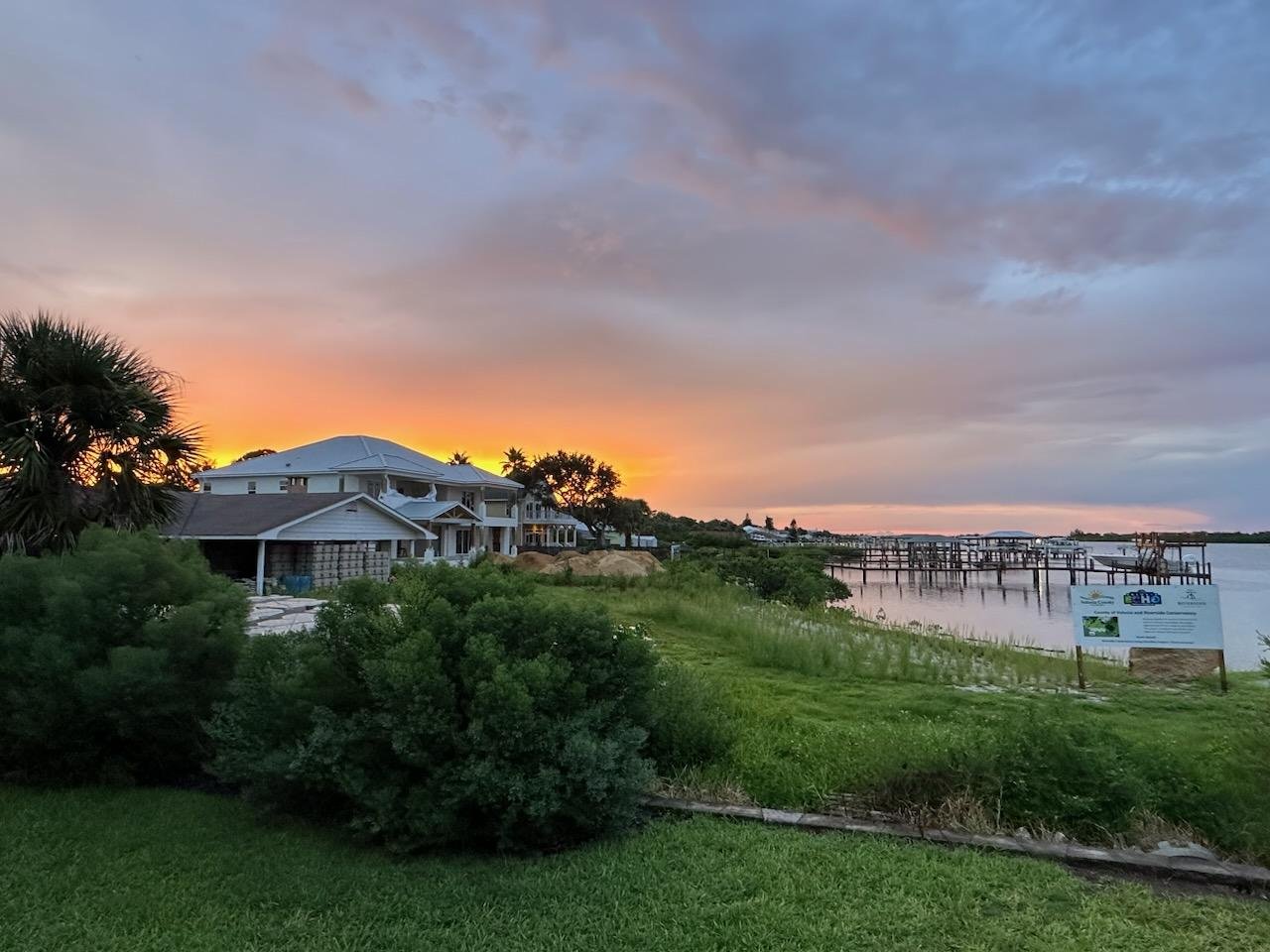Riverside Conservancy™ Center
The Riverside Conservancy Center (RCC) in Edgewater, Florida, is our HQ and showcases living shoreline techniques, educational programs, and an ADA kayak launch. The RCC property was purchased and donated to Riverside Conservancy by Dr. Art Litowitz and the Litowitz Foundation.
The living shoreline restoration area and kayak launch have been funded by grants from the Volusia ECHO Program, Florida Fish and Wildlife Conservation Commission, and dedicated volunteers.
The site is a field testing station for aquatic habitat prototypes for local universities and partners. The RCC will help fulfill the Conservancy’s goals of fostering community leaders, restoring shorelines, building a more resilient community, and creating harmony between citizens and the nature around them.
Thanks to the generous support of the Litowitz Foundation, this shoreline property in Edgewater, Florida is the science and research home of the Riverside Conservancy. Photo by June Litowitz.
Several years ago, Dr. Art Litowitz and the Litowitz Foundation donated riverfront property adjacent to the Mosquito Lagoon Aquatic Preserve to the Riverside Conservancy. Formerly the home of the Robinson Family, the property was ideal for demonstrating ways to provide living shoreline on a hardened riverfront. FWC’s Marine Estuarine Habitat Restoration, Monitoring, and Assessment (MEHRMA) funding enabled the Conservancy to obtain engineered plans to remove the antiquated seawall and replace it with a living shoreline consisting of natural slopes and native vegetation.
The plans became the basis for Riverside Conservancy’s application to Volusia County’s ECHO Grants-In-Aid program, which funded the construction of the living shoreline and kayak launch.
Before restoration:
Replacing the existing seawall at the Riverside Conservancy Center with a living shoreline has increased intertidal habitat, wildlife, native plants, and filtration of surface runoff. Riverside Conservancy went from grey infrastructure to green infrastructure. Features include Oyster Reef Breaks, salt marsh area, mangroves, and upland native plants.
After restoration:
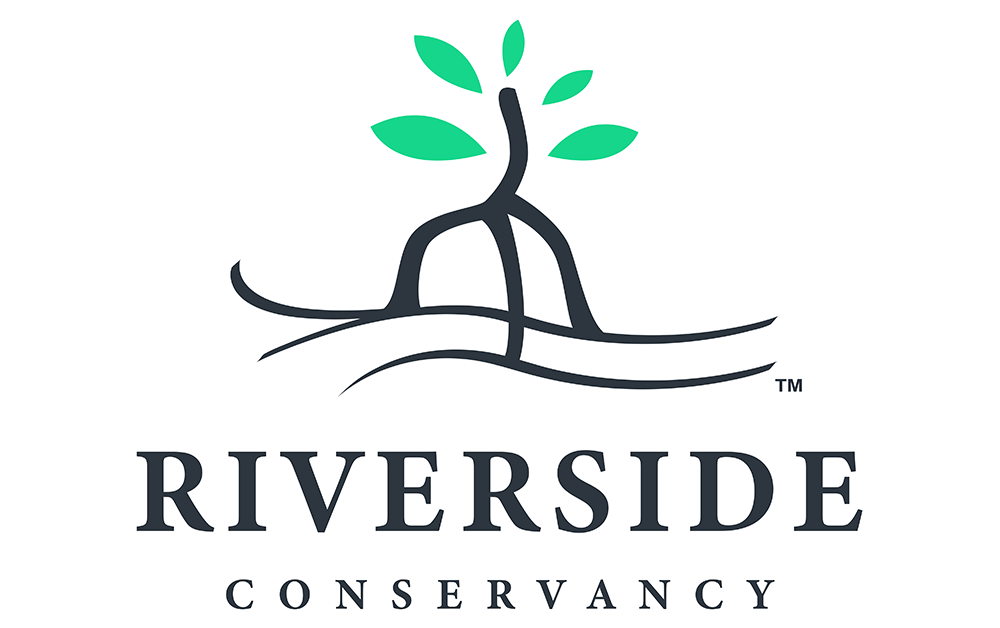









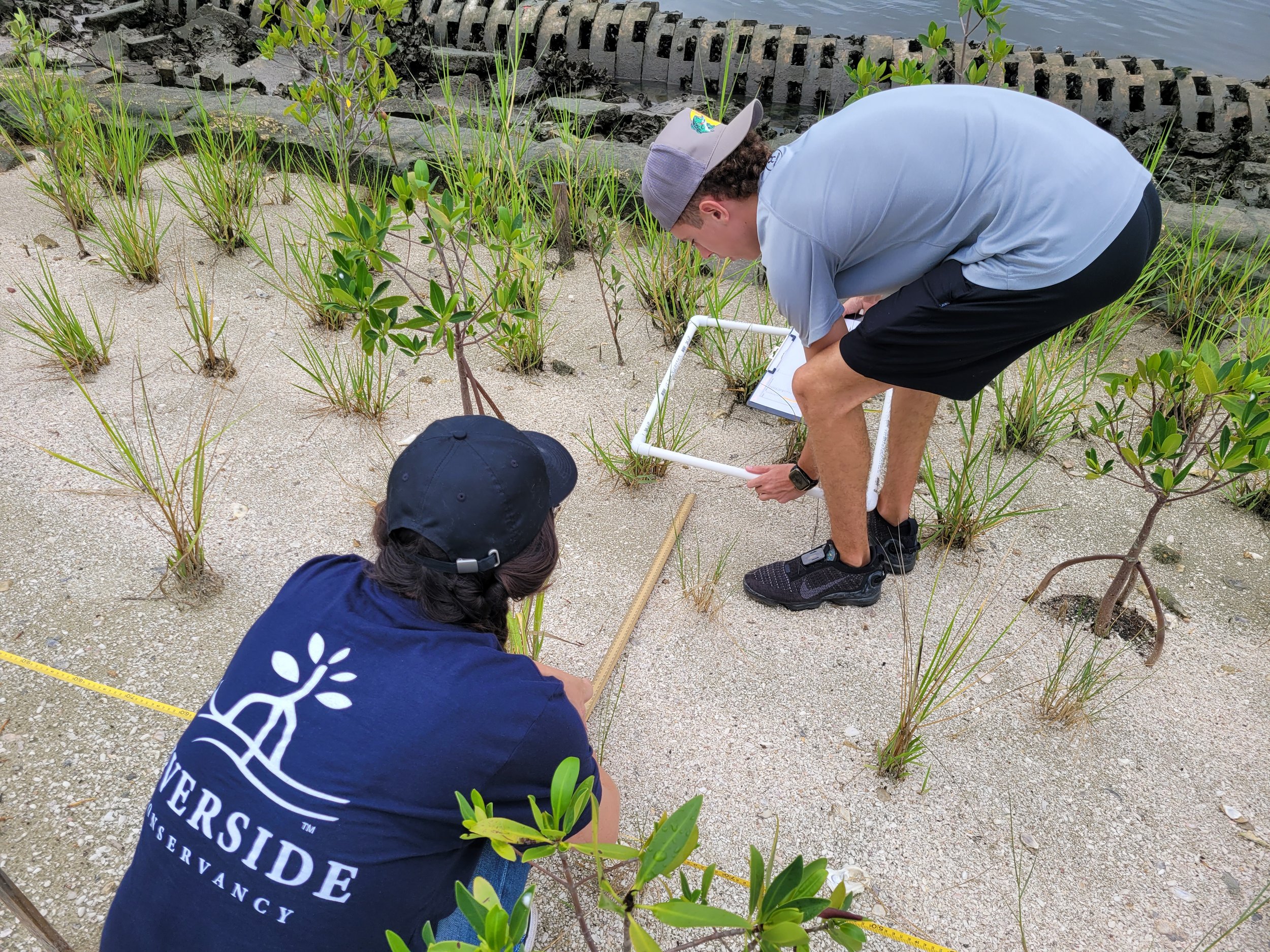


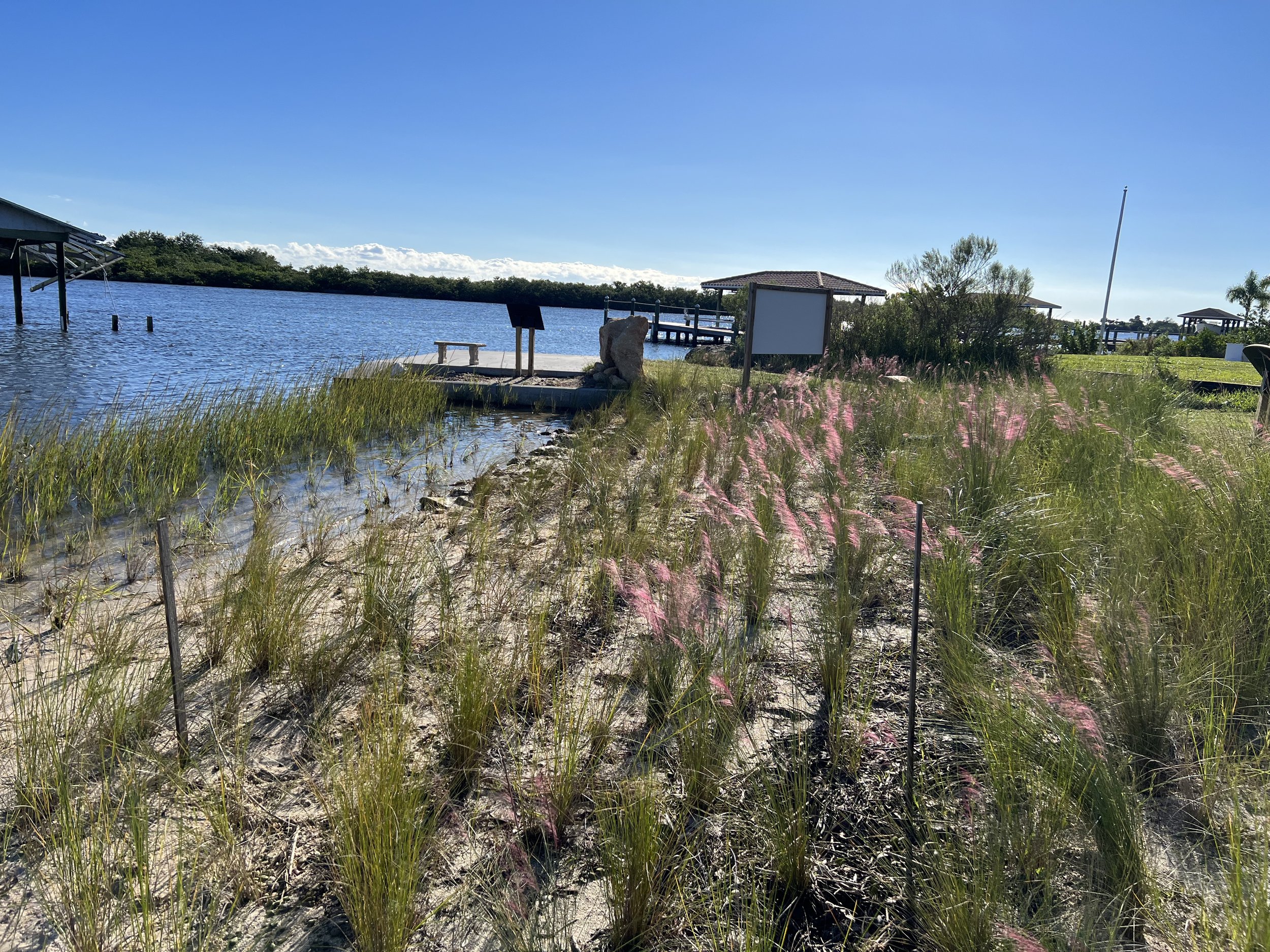
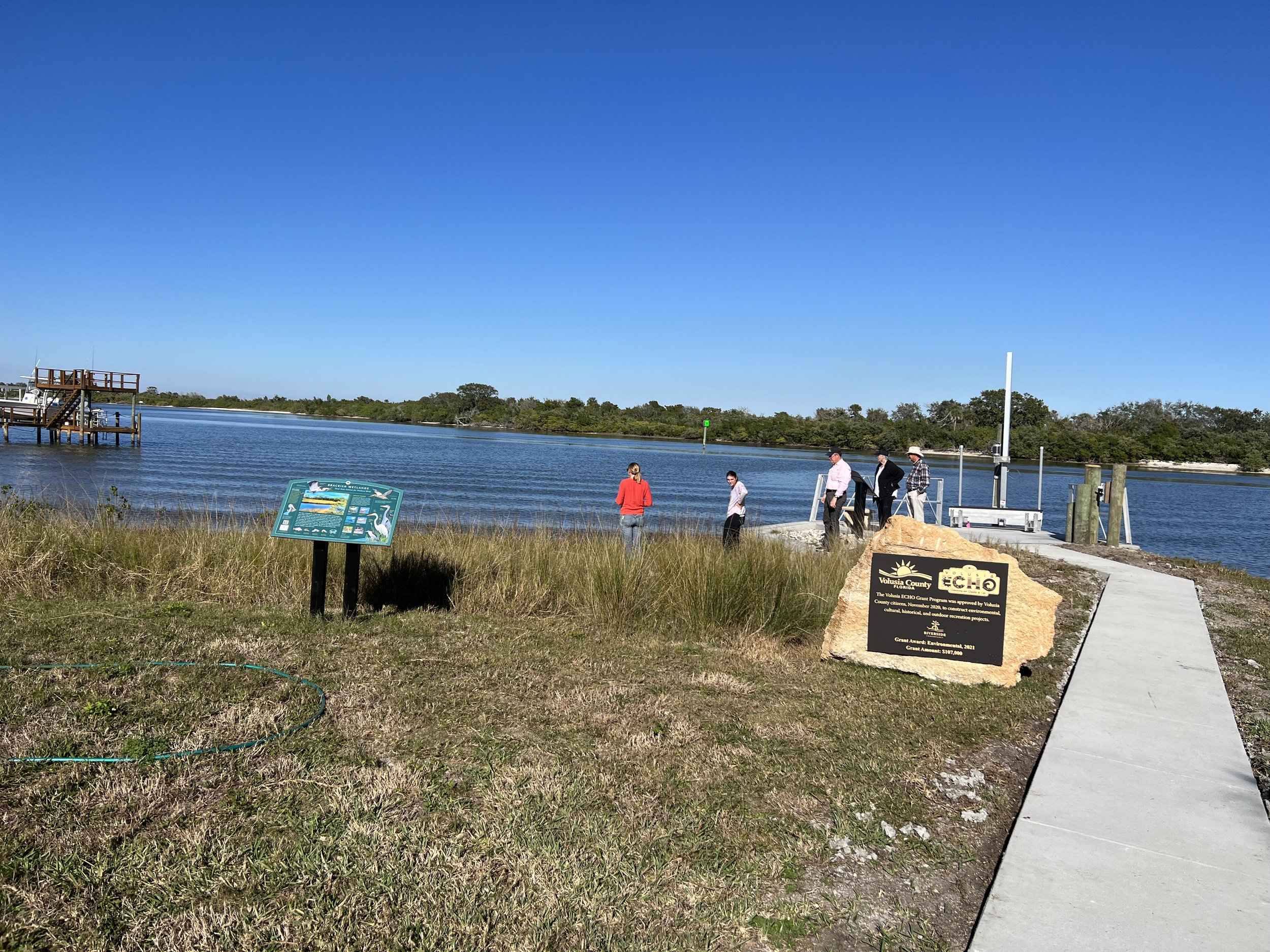

![20230201_125548[58].jpg](https://images.squarespace-cdn.com/content/v1/5c40fe933e2d0992cd77b2bb/1706637565281-4ZF93X9RLH07AXLK2MVM/20230201_125548%5B58%5D.jpg)
